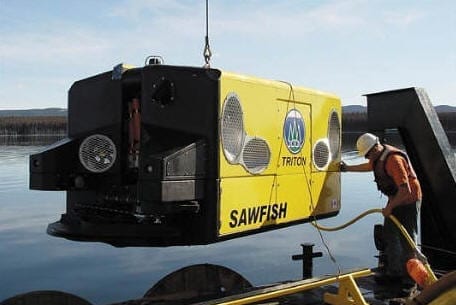Underwater thruster technology and marine propulsion has always fascinated humans. All types of systems have been tested and tried. There has been a significant evolution in the underwater propellers today and although the propulsion system is a crucial element of every underwater vehicle, its understanding remains shrouded in mystery and performance parameters not always fully understood.
The essence of any thruster is to produce a kinetic jet power that will produce a movement force given a specified amount of input power. Whether the input power is manual, mechanical or electrical is of little importance. In all cases the objective is to obtain the most kinetic power forward for every unit of input power.
It has been well established that just like any lever arm system of force multiplication, underwater propellers with a larger diameter will produce more thrust per unit of input power. The compromise, however, is size and weight. In this case bigger is better in terms of energy conversion. That is when efficiency comes in and is so important. You do not want a 10″ diameter prop that is only 40% efficient when you can have an 8″ diameter prop that is 70% efficient.
In the process of evaluating a propulsion system, at a first level to compare thrusters based on equivalent size (propeller diameter) and establish the level of efficiency at the thrust level, or range, of interest. The choices then lead to the consideration of the physical constraints dictated by the vehicle design.
Once a physical envelope is established, the evaluation can then consider whether the propulsion will be hydraulic or electrical, whether it is surface powered or battery powered. The final stage is then the selection of motor depending on the HPU pressure and flow capability in the case of a hydraulic unit, or voltage and current in the case of an electric system.
For large surface power supplied systems, the efficiency of the power conversion may be secondary to physical properties. In underwater vehicles with limited power storage, efficiency of power conversion is of primary importance.

